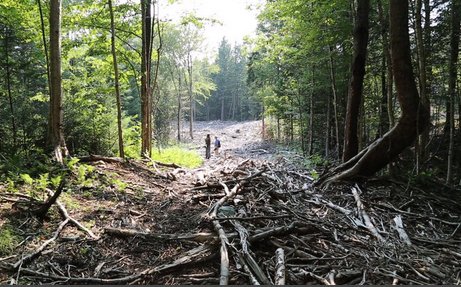09 de Abril de 2021




Crisis climática / Energía / Lavado de imagen /
Internacional - Crisis climática
El foro dominado por los combustibles fósiles que asesora a la UE sobre captura de carbono (13/10/2024)
¡NO a REDD! Declaración del Encuentro en la Amazonía sobre proyectos de carbono (30/07/2024)
El Tribunal Europeo de Estrasburgo sentencia que la inacción climática viola los derechos humanos (09/04/2024)
La COP del clima se convierte en otra Davos (15/02/2024)
Los créditos de carbono y el mercado voluntario: ¿solución o distracción? (30/01/2024)
Expansión de las plantaciones de árboles destinadas a los mercados de carbono: más evidencias del fraude de la compensación (19/12/2023)
“Es una paradoja lo que pasa acá”: Terminó la COP28 salpicada de acusaciones por permanencia del negocio petrolero y gasífero (15/12/2023)
Defensoras socioambientales expusieron vulneraciones a DD.HH. protagonizadas por proyectos ante foro de Naciones Unidas (10/12/2023)
Alertan sobre las peligrosas decisiones que se toman en la COP28 (06/12/2023)
Las petroleras invaden la Cumbre del Clima en la que se discute sobre el fin de los combustibles fósiles (06/12/2023)
Crisis climática
El gas exportado produce emisiones mucho peores que el carbón, según un importante estudio. Estados Unidos (04/10/2024)
Eduardo Gudynas, experto en transición ecológica: “Si planteamos alternativas tenemos una meta donde ir”. Chile (05/09/2024)
Hidrógeno Verde: qué pasa en Chile, Uruguay y Argentina. Argentina (20/08/2024)
Comunicado por sanción de DGA a ATEX y su proyecto Valeriano por robo de aguas en las nacientes. Chile (13/08/2024)
Abiertas las postulaciones para el taller “Extractivismos: transiciones y alternativas”, con el experto internacional Eduardo Gudynas. Chile (10/08/2024)
Bajo agua y fuego: el momento Katrina en la política de Brasil. Brasil (24/05/2024)
Chicago demanda a cinco grandes empresas petroleras, acusándolas de destrucción del clima y fraude. Estados Unidos (22/02/2024)
Energía
En Chonchi rechazan instalación de parque eólico que agravaría la escasez hídrica y denuncian a la empresa por tala ilegal de bosque nativo. Chile (19/10/2024)
Central Rucalhue: Conaf da luz verde a faenas de cuestionado proyecto hidroeléctrico en el río Biobío. Chile (18/10/2024)
Conflictos y Debates Minero-Energéticos. Censat - Ocmal - Olca. Perú (25/09/2024)
Tras preocupaciones por impacto ambiental, Google reformulará “desde cero” data center en Cerrillos. Chile (17/09/2024)
Hidrógeno Verde: qué pasa en Chile, Uruguay y Argentina. Argentina (20/08/2024)
Vecinos de toda Cantabria protestan contra los destrozos de humedales, manantiales y montes de las obras del parque eólico de El Escudo. España (20/08/2024)
Primer Tribunal Ambiental condena a Engie por daño ambiental. Chile (12/08/2024)
Lavado de imagen
Denuncian operación de lavado de imagen de minera Barrick Gold en el Valle del Huasco. Chile (22/10/2024)
Barrick Gold no puede lavar su imagen usando a la infancia. Chile (06/09/2024)
Minera Aclara celebra un triunfo inexistente: Tierras raras, eufemismos, mentiras y despojo. Chile (25/08/2024)
BlackRock recibió una advertencia sobre “declaraciones engañosas” vinculadas a fondos ESG. Estados Unidos (27/03/2024)
Bajo la lupa adquisición de Anglo American del Santuario Los Nogales: Ambientalistas cuestionan operación. Chile (08/03/2024)
Juntos contra el cuento de hadas verde de Tesla: Activistas de Alemania y Chile luchan solidariamente contra la expansión de Tesla. Alemania (07/03/2024)
Ver más:
Crisis climática / Energía / Lavado de imagen /